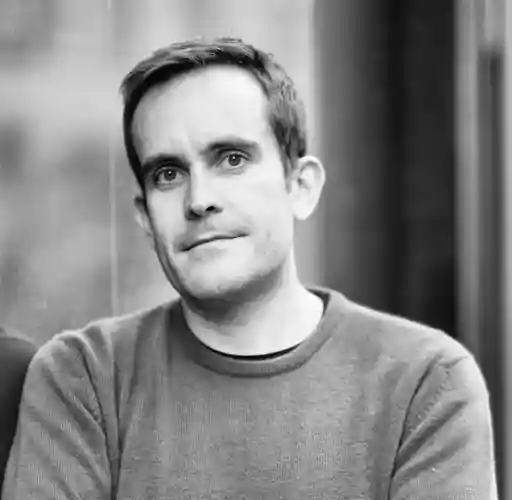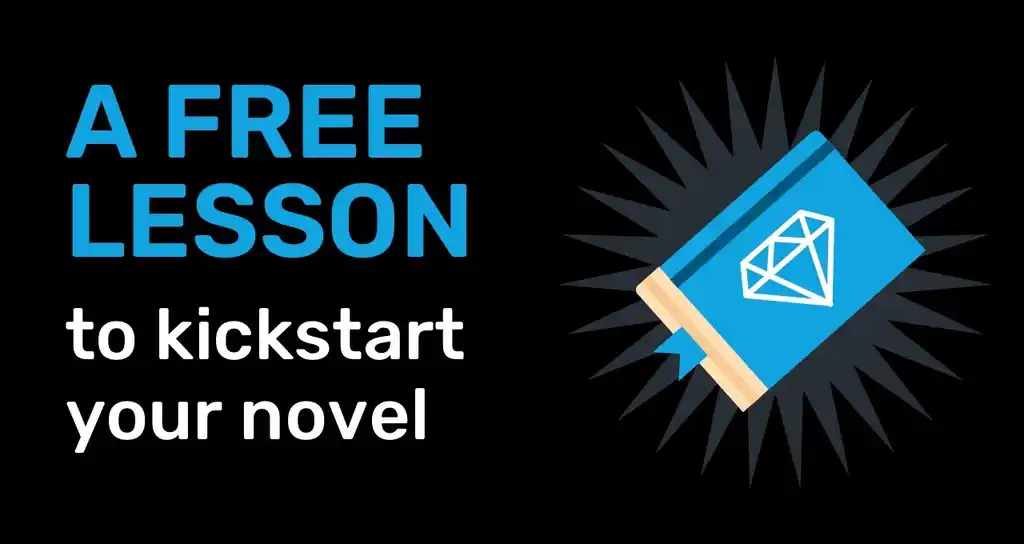This has been edited for length and clarity. To work with Harry Freedman on your next book, send him a request through his Reedsy profile.
I'm Harry Freedman: I am a nonfiction author. I've written five nonfiction books — all best sellers. My publisher is a company called Bloomsbury, who publishes Harry Potter, and what I want to talk to you about tonight is how one writes nonfiction and tells a story at the same time. And I want to do that because stories have a way of getting information across. We learn through stories. If you think about all the great literature, think about Shakespeare, Charles Dickens, Harry Potter, it's all through stories. Stories are the way we learn, and if you can get your information across in a story, you're going to make such a difference to your audience.
The other reason you want to use stories for nonfiction is that stories are entertaining. Stories hold people's attention. People will read more. If your book is a book which they're going to read, because it's telling a good story, even though it's actually nonfiction and what you're trying to do in the book is to give important information, if you're telling a story, they're going to pay more attention. They're going to keep the book in their hand. They're not going to put it down.
Nonfiction is not about writing newspaper articles. It's not about writing encyclopedia articles. It's about telling stories.
So what I wanted to do right now, really is just talk to you a little bit about how we tell stories. And there are three things I want to cover in this webinar.
- How to structure a story. How are you going to set it out? How are you going to make it flow, so that it's got a beginning, a middle and an end? So it reads like a story?
- Making your story readable. How to make it gripping, to make people want to carry on reading it.
- Examples from successful nonfiction writers. We'll see how they tell stories.
Let's get started.
1. Story Structure
There are five points I want to cover here.
Situation or Case Study
Now, remember when you are writing a nonfiction story, you may be writing in one of many different genres. You might be writing history, philosophy, science, business books, how-to books, biography. You somehow need to take what you're writing about and turn it into a case study.
How are you going to do that?
Start with what led to the story you're about to tell. Let's just say, for example, that you're writing a biography. That's easy: it's a story of somebody's life. But what if you're writing a business book? What's the story you want to tell with that? Well, it's probably about how you set up this business, or how your friends set up a business — how their business was created. That's the background and the situation, so you need to think about that first.
Characters
Once you've set out the background, you can then move on to the characters. These are the people you are talking about. In a business book, the character is not a person: the character is a business. In a biography, the character is a person. So the word character doesn't have to mean 'person.' It simply means the subject matter, if you like. Who are they? Or what is it?
Narrative
This is obviously the most important part. When you tell the story, you always need to deploy strong action words rather than just saying, "the business was good because it's sold widgets."
Talk about what it did: what happened? Who were the customers? Why were they coming in? Describe as much as possible. Tell the story of the business.
Outcome
You've given the background, you explained the characters, you described what's happening in the business, what the results were. Now, what happened? Why will people come away from the business book with something positive, or from the biography with something positive. What was the result? What was the outcome?
But...
This fifth and final point is really important. It’s the cliffhanger or the page-turner. You want to end your chapter — or your page — with something that makes readers want to turn over to the next page. It is what helps keep your audience engaged. It's what keeps people listening.
So what is the cliffhanger? What is the page-turner? More on that very shortly.
2. Key Points
These are the key areas that you need to try and get across when you're telling your story.
Develop your characters
Let's come back to our example of a business book. You're not just talking about a shop that sells milk. It is a place where people come in, where they engage with each other, where there are people behind the counter. Or it may be a software business, but the most interesting fact is not that it's creating software. It's about the people who work there. It's the interaction between them. Develop all that and get that across. Give your business an appearance and a personality. Get your reader to feel they are somehow engaged with that business.
If you're writing a history book, talk about the people who are involved in the story you are telling. Who were they, what were their lives like, what were they doing? Why are they important to the story? Develop your characters.
Describe places and things
Explain what it looks like. Get your reader to feel that they are in the place that you are talking about. Whether it's the shop, whether it's a historical story from 500 years ago, describe what it looked like, what the streets were like, what the landscape was like. What people were wearing. Help the reader to visualize what you're writing. This will be really important because that is what connects them with the story.
Coherence
Make sure that your narrative hangs together. Make sure that people understand what's going on. Don't just jump in, which is very easy to do if you're not careful. If you don't think about it, you will find yourself jumping around from one topic to another. Don't make one point, then another point, and another point, then another point. Link it all together somehow.
Put yourself in the reader's shoes and ask yourself: what the reader is going to be thinking? What will they get from what you're telling them? Are you clear enough?
Make sure that each point leads logically to the next point: this is really important if you wish to be coherent.
Then, the other side of coherence is simplicity...
Simplicity
Keep your sentences short and simple. When you're writing about something complicated, it's so easy to get carried away and have long sentences that don't link up. Keep your sentences short and simple. If you're an experienced writer (and I'm sure many of you are), you can have longer sentences because you know how to do it. But when you're starting out, keep it short and simple. Have one subject, one verb, and a full stop.
Try and break your sentences up. Don't link ideas together with lots of ands and buts. Keep it all short and simple.
Suspense
This comes back to what I said a little earlier: always leave something hanging over for the next chapter. Suspense is really important.
So those are the five key points we need to get across in our stories:
- Develop your characters,
- Describe what it looks like,
- Make sure everything hangs together,
- Keep it short and simple,
- And leave them in suspense.
3. Examples of storytelling in nonfiction
What I want to do now is to give you some examples of how nonfiction writers tell a story.
History
So this extract is from Tom Holland, a well known British history writer. It's a book called In the Shadow of the Sword. He's writing about the growth of the Persian empire 1,500-or-so years ago.
Yusuf As'ar Yath'ar, an Arab king celebrated for his long hair, his piety and his utter ruthlessness, had been brought to defeat.
You see what he's done there? He's put in long hair, piety, ruthlessness. You can picture this guy.
Leaving the reek of the battlefield, he rode his blood-flecked white charger.
See the description there? Blood-flecked white charger.
Down to the very edge of the Red Sea. We've now got a location.
Behind him, he knew, Christian outliers would already be advancing against his palace - to seize his treasury, to capture his queen.
We got the drama there.
Certainly his conquerors had no cause to show him mercy. Few were more notorious among the Christians than Yusuf. Two years previously, looking to secure the south-west of Arabia for his own faith, he had captured the regional stronghold of Najran. What had happened next was a matter of shock and horror to Christians, far beyond the limits of Himyar, the kingdom on the Red Sea Yusuf had ruled on and off, for just over a decade.
See what he's done there? He's basically telling a story about how he had captured a stronghold called Najran and that has had impact far beyond the kingdom. But he's done it in such a way, you've got a picture who this guy is, what he looks like, where he is, and what's going on in the background. So I think that's a really, really good example of how to use storytelling to get history across.
Science
The next one is completely different. It's from a science book. This is by a guy called Steven Pinker, an American academic. He's writing about how language develops and evolves. But he's doing it again through stories. Language is a science of sorts and this is a strong example of how to tell stories when you're writing a science book.
By the 1920s it was thought that no corner of the earth fit for human habitation had remained unexplored. New Guinea, the world's second largest Island, was no exception.
He's placing us in New Guinea. He's going to give us a background as to how New Guinea developed.
European missionaries, planters, and administrators clung to its coastal lowlands, convinced that no one could live in the treacherous mountain range that ran in a solid line down the middle of the island. But the mountains visible from each coast in fact belonged to two ranges, not one, and between them was a temperate plateau crossed by many fertile valleys.
He's giving you a picture of what the place looked like and he's giving you a sense that there are other people — missionaries and planters and administrators — coming in and trying to occupy this land in the 1920s.
Michael Leahy, a footloose Australian prospector set out to explore the mountains with a fellow prospector and a group of indigenous lowland people hired as carriers. After scaling the heights, Leahy was amazed to see grassy open country on the other side. By nightfall his amazement turned to alarm, because there were points of light in the distance, obvious signs that the valley was populated.
So we are getting tension now; he's exploring the mountains, but suddenly he's realizing there are other people around. He's not as safe as he thought he was.
After a sleepless night in which Leahy and his party loaded their weapons and assembled a crude bomb, they made their first contact with the highlanders. The astonishment was mutual.
Though this is a book about language, he's still setting a scene here. He's giving you a background, he's introduced you to a character. There is something dramatic about to happen, and he's got you involved.
Society
The last example I want to give is from a book about society. A very well known book called Men Are from Mars, Women Are from Venus by John Gray. It came out 20, 30 years ago — maybe longer. It's a really well-written book which showed, in a wonderful style, the difference between men and women and how men have to appreciate the way women think and vice versa.
One of the biggest differences between men and women is how they cope with stress. Men become increasingly focused and withdrawn while women become increasingly overwhelmed and emotionally involved.
Does that resonate? That certainly resonates with me.
At these times, a man's needs for feeling good are different from a woman's. He feels better by solving problems while she feels better by talking about problems.
So he’s given you there the case study; the background, which I mentioned earlier on.
He's coming to the characters.
When Tom comes home, he wants to relax and unwind by quietly reading the news. He's stressed by the unsolved problems of his day and finds relief through forgetting them.
So we now have got a sense of Tom. He wants to relax. He's come home. He just wants to chill out and forget his problems.
His wife Mary, also wants to relax from her stressful day. She however, wants to find relief by talking about the problems of her day. The tension slowly building between them gradually becomes resentment.
He wants to just chill out. She wants to talk. As it goes on, the tension becomes stronger and stronger, they're beginning to resent each other.
Tom secretly thinks Mary talks too much, while Mary feels ignored. Without understanding their differences, they will grow further apart. You can probably recognize this situation because it was just one of many examples where men and women are at odds. The problem is not just Tom and Mary's but is present in almost every relationship.
So this is a different sort of story. It's a case study into which he's brought characters. He hasn't described what it looks like in their house. He doesn't need that. But what he's done is he's taken you into their lives and he's got you realizing the tensions and the emotions between these two people.
So those are just some examples of how one tells stories in nonfiction.
The last thing I want to do is take you through some examples of how you end a chapter on a page-turner.
Examples of page-turners in nonfiction
What do you do to get your reader to want to turn to the next page and see what happens next?
We're going to use the same three books.
The first one is again from Tom Holland's In the Shadow of the Swords. This is the end of the chapter. He's now writing about Justinian, a Roman emperor.
Justinian himself had no patience with such pessimism. Amid all the sudden the calamities that had engulfed him and his dream of fashioning a globe-spanning Christian order, he still maintained his invincible confidence that he was serving the will of God. But disaster was not done with him yet. As the calamitous year of [Syrian city] Antioch's sack drew to a close, a horror of barely comprehensible proportions was drawing near to the southernmost borders of his empire.
If threatened not merely the fracture, but the annihilation of the world.
He's left us hanging on there. The world is about to be annihilated - and we can sympathize with that, can't we? The world is about to be annihilated... and he's left us hanging on. We want to turn the page to see what happens next.
Let's come back to Steven Pinker's book on language and, again, it's a different sort of story but again it's a page-turner. He's talking about a young child and how she learns to speak.
Sarah sometimes uttered word forms that she could not possibly have heard from her parents: When she be's in the kitchen..
Remember kids saying that?
He's a boy, so he gats a scary one. [costume]
She do's what her mother tells her.
He's saying that children use words that they don't hear from their parents.
She must, then, have created these forms herself using an unconscious version of the English agreement rule. The very concept of imitation is suspect to begin with (if children are general imitators, why don't they imitate their parents' habits of sitting quietly in airplanes?)...
He's using a bit of humor just to get you involved there.
...but sentences like this show, clearly language acquisition cannot be explained as a kind of imitation.
So again, he left you hanging there. He wants you to turn the page and find out how language is acquired — because clearly it's not just imitation the way people might think it is. If it was, why don't kids sit quietly in airplanes like their parents do?
And the last one I want to look at is again from John Grey and this is his chapter ending. It's not drama but it's leaving you on a high.
If you're a woman, I suggest that for the next week you practise restraining from giving any unsolicited advice or criticism. The men in your life not only will appreciate it, but also will be more attentive and responsive to you.
If you're a man, I suggest that for the next week, you practise listening whenever a woman speaks, with the sole intention, of respectfully understanding what she is going through. Practise biting your tongue whenever you get the urge to offer a solution or change how she is feeling. You will be surprised when you experience how much she appreciates you.
It's a page-turner because it's left you on a high. It's left you thinking, "Here's a solution. Here's something I can do. This might ease the tension in our relationship."
And you now want to go over the page and find out what he's going to say next.
Harry is a ghostwriter on the Reedsy marketplace. To see if you could work together on your next book, send him a request through his Reedsy profile.





